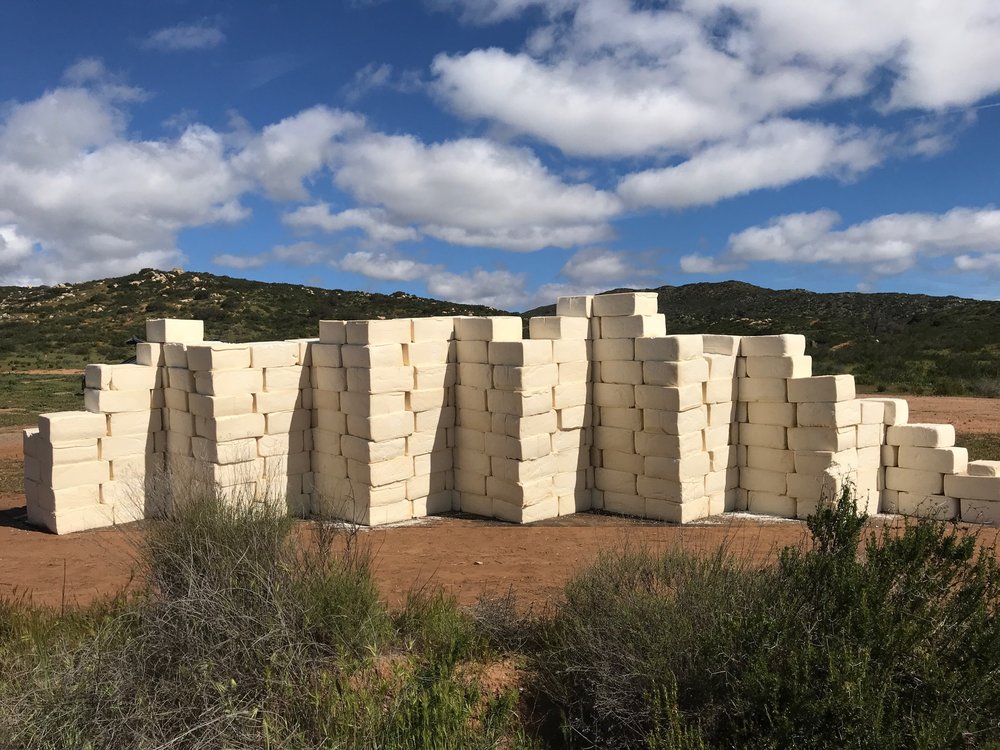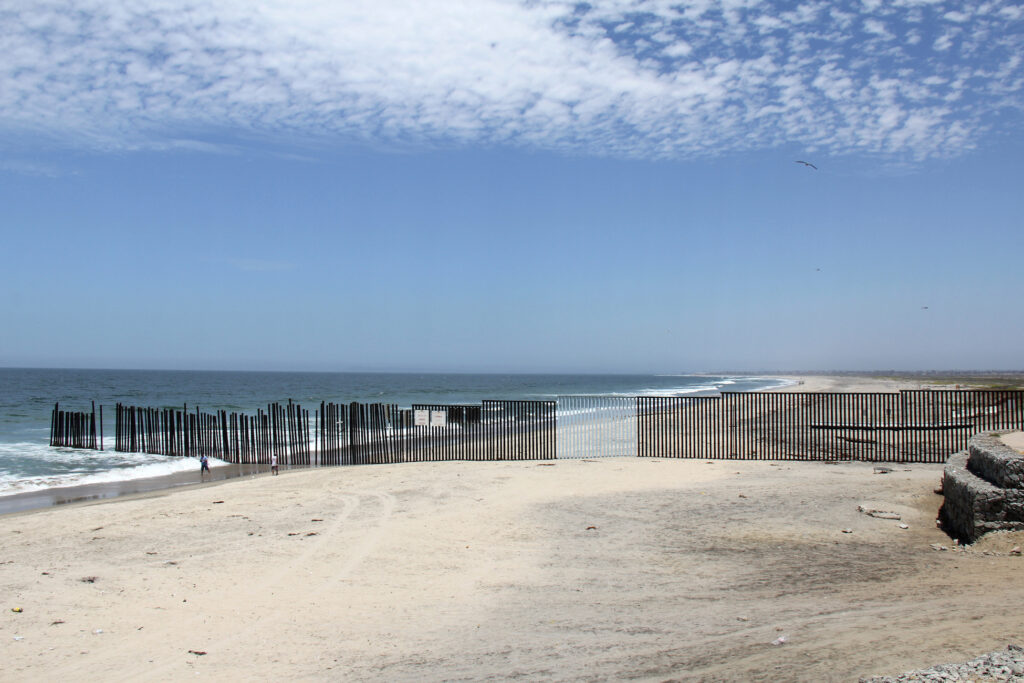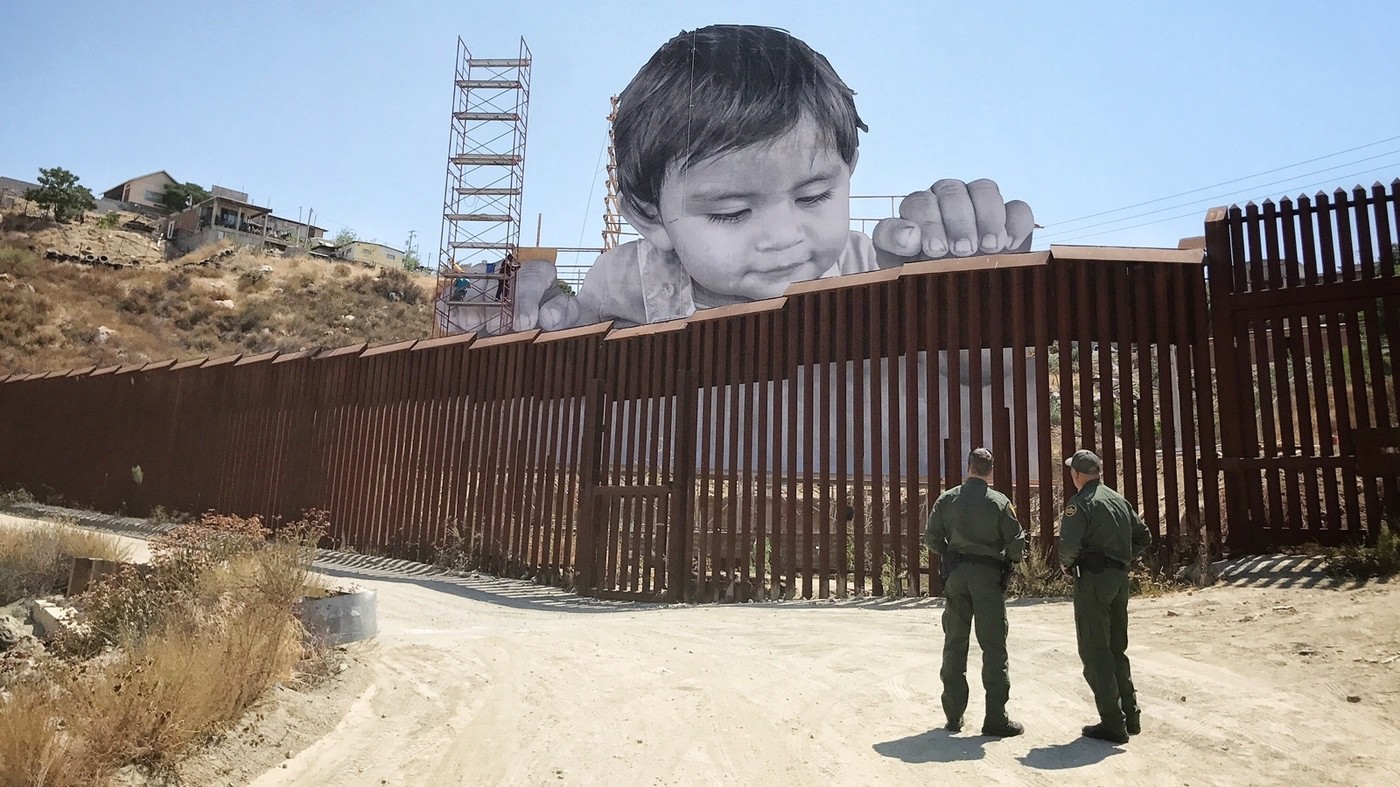Text by Frédérique Landry
Walls are one of the oldest and most elemental forms of construction. They carry both literal and figurative meaning and subdivide spaces into two zones. Walls represent more than their physical reality as they can also signify power, isolation and restriction. Most of the time these walls express a relatively harmless functional purpose. When it comes to transnational borders, however, a wall’s controversial character is inescapable. With the latest migration surge, the situation at the U.S-Mexico border is an extremely difficult one and even people whose lives do not intersect with the border on a regular basis are thinking about it more than usual. But even before this recent wave of attention, artists have been drawn to the border and have been bringing attention to the many issues it raises through their work.
In an article from 2013 called “How the US-Mexico border is cruel by design”, philosopher Noam Chomsky states that “the U.S.–Mexican border, like most borders, was established by violence—and its architecture is the architecture of violence.” He also adds that “the built forms you see in the US border states, that militarized architecture developed over years, seems likely to stay for a while.” The wall looms large in contemporary discourse but the border as a physical, cultural, and symbolic presence is nothing new.
Over the years, hundreds of thousands of undocumented immigrants have crossed the border illegally into the United States. That led both democrat and republican U.S. presidents to build border barriers since the beginning of last century. Building a wall that divides the border between the US and Mexico was also infamously Donald Trump’s main goal since his election campaign started back in 2016. He made this wall a symbol of his administration’s efforts to slash immigration. Sadly, US government has made it clear that it’s easier to erect physical barriers than to really address the economic and political causes of migration.
Since the deeper issues of this humanitarian disaster happening at the border are not addressed by them, artists and activists have taken on this role and have been actively trying to push back the xenophobic narratives that seek to degrade, shame and blame the migrants.
Border art is a contemporary art practice rooted in the socio-political experiences such as of those on the U.S.-Mexico borderlands or frontera.
Since its beginning in the mid-80’s, this artistic practice has addressed subjects and questions surrounding homeland, borders, surveillance, identity, race and ethnicity. Border art makes it clear that the border dynamic is a lot more complex than just putting up physical barriers. It has become a tool for political activism and a way to humanize a consistently dehumanized area. The artworks that are found along this wall are daily acts of resistance. They bring media attention to the thousands of migrant deaths, the violence, the xenophobia and the social inequalities that are experienced daily close to the border. Furthermore, it makes the pain caused by the wall tangible, shared, universal.
Here are a few examples of the most controversial border art that has been created on the US-Mexico border:
Through these colorful coffins, Alberto Caro’s installation in Tijuana denounces the deaths registered each year at the border caused by migration to the United States. Since 1998, at least 7,000 migrants are believed to have died along the U.S-Mexico border.

Cosimo Cavallaro used his art to “Make America Grate Again” by building a wall that is made of expired cotija cheese in front of the border wall in Tecate, California. Through his wall of expired cheese, Cavallaro brings attention to the waste associated with the costs of building the wall.

Ricardo Dominguez and Brett Stalbaum, together with a wider team of poets and professors, created the Transborder Immigrant Tool (TBT) to improve the odds of a safe crossing of the U.S-Mexico border. Thousands of people have died in their journey, mostly due to the extreme heat of the desert. The TBT consists of a GPS system (in this case, standing for Geo Poetic System) with 24 hours of experimental poetry aimed at providing not only inspiration for survival, but also information on where to find food, water and directions to potentially safer routes.

Artist Judi Werthein confronts issues regarding identity, commerce, and the social policies that control them. Brinco (Jump) is an American corporation that fabricates sneakers designed specifically to cross the Mexico–U.S border. The inner sole includes a map, a flashlight, and a compass, as well as pockets to hide money and medicine. The sneakers were distributed free of charge to people in Tijuana attempting to cross the border illegally but they were sold as a one-of-a-kind art object in the United States, shedding light on its insatiable consumerist culture. Brinco also addresses the problems and inequalities among world economies, markets and the free movement of goods as opposed to the restricted movement of people and labour.

Ana Teresa Fernández has been “erasing” the border wall with a series of installations since 2011. In “Borrando la Frontera” (Erasing the Border), parts of the U.S.-Mexico border fence was “removed” in three places by painting large sections sky blue allowing the fence to visually blend into the background. According to the artist, this was an effort to symbolically erase a long-standing physical barrier that separates families and causes widespread misery.

The dehumanization of migrants is an increasingly alarming consequence of border policies that have been put in place since the 1980’s, and was unfortunately exacerbated during Trump’s presidency. The new administration has ordered to stop the construction of the wall and also put an end to the inhumane “Remain in Mexico” policy implemented by Trump that left many vulnerable asylum seekers to wait in dangerous and unsafe circumstances. However, administration officials have repeatedly warned that changes in border policies take time to implement and while reviews of those policies are ongoing, the situation along the border sadly remains the same. In the meantime, smuggling some humanity through art into the border becomes essential.


Pushed to the Wall